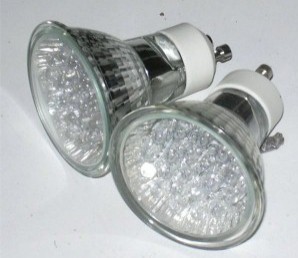Researchers working at the Georgia Institute of Technology recently announced they had improved the performance of LEDs through the use of zinc oxide microwires.
Scientists from Georgia Tech's School of Materials Science and Engineering affirmed they had been working to create technologies that could potentially improve the performance of LEDs, which are increasingly common in homes and businesses as a lighting source. The research was funded with grants obtained from the Defense Advanced Research Projects Agency (DARPA) and the U.S. Department of Energy.
LEDs are already far more efficient than many of the top selling light bulbs currently available on the market. They consume roughly 10 percent of the electricity of incandescent light bulbs and they last far longer, with some models tested to function for more than 10 years.
The team of engineers working at Georgia Tech said they used zinc oxide microwires to significantly improve the efficiency at which gallium nitride LEDs convert electricity to ultraviolet light. Georgia Tech News reports the devices are believed to be the first LEDs whose performance has been improved as a result of the creation of an "electrical charge in a piezoelectric material using the piezo-phototronic effect."
The scientists effectively created a piezoelectric potential in the wires by applying mechanical strain. They subsequently harnessed that potential to tune the charge transport and enhance carrier injection in the LEDs. The researchers noted that the control of an optoelectronic device with piezoelectric potential – known as piezo-phototronics – illustrated how materials that possessed both semiconducting and piezoelectric qualities could potentially be controlled mechanically, according to a report from PhysOrg.
"By utilizing this effect, we can enhance the external efficiency of these devices by a factor of more than four times, up to eight percent," Georgia Tech professor and study author Zhong Li Wang said. "From a practical standpoint, this new effect could have many impacts for electro-optical processes – including improvements in the energy efficiency of lighting devices."
The scientists reported their findings in the September 14 issue of the journal Nano Letters. Their findings indicate their newly devised method is capable of increasing the emission intensity of LEDs by a factor of 17.
Moreover, they were able to augment the injection current by a factor of 4 when they applied a compressive strain of 0.093 percent to the zinc oxide wire. That technique "improved conversion efficiency by as much as a factor of 4.25," the scientists reported.













